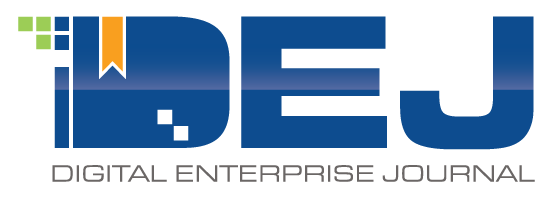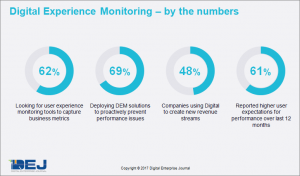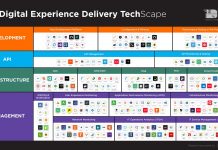Digital Enterprise Journal (DEJ) recently completed a preliminary research for a study on Digital Experience Monitoring (DEM), gaining insights from hundreds of business and IT professionals and executives. In the past, we conducted a number of research studies on the topic of User Experience Monitoring (UEM), but the findings of this new study showed that DEM is not just a new marketing term for UEM or even another step in the evolution of this concept, but a technology class that includes a number of new dynamics, use cases and capabilities.
“Digital Experience Monitoring (DEM) is a technology discipline for gathering intelligence about the health of IT services from the perspective of the end-user and in the context of an organization’s business objectives”
Why “Digital” in DEM?
Even though there are no universally accepted definitions of the terms “digital transformation” and “digital economy”, there are a number of attributes that are often associated with the meaning of the word “digital” when describing these concepts- customer centric, business outcomes oriented, data driven, empowered by new technology concepts (Big Data Analytics, IoT, Cloud, Mobility, artificial intelligence, etc.), etc. DEJ’s research shows that the value proposition of DEM includes all of these attributes as the key drivers for deploying DEM technologies and are centered around the same reasons why organizations are embarking on a digital transformation journey.
- Business-centric approach for managing IT processes. Sixty-two percent of organizations in DEJ’s research reported that their goal for transforming IT is to provide business users with tools and data that they need to be effective. Many of the DEM capabilities play a critical role in that transformation process as the data that the intelligence they provide, even though it comes from the IT perspective, is often used for business purposes.
- Running the IT with the customer as the key focal point. DEJ’s research shows that the key goal for transforming the IT is to improve satisfaction for both external (69% of organizations) and internal (59%) customers. DEM solutions not only are able to capture and analyze performance IT services from user perspective, but also create a feedback loop that can be leveraged for improving both IT and business processes.
- Becoming data driven organizations. Fifty-two percent of organizations reported that data analytics capabilities and generating actionable information are top criteria when selecting DEM solutions. Even though DEM tools cannot be used to replace “pure play” Big Data Analytics solutions, they can augment the value that these solutions provide by generating unique viewpoints that benefit business users and decision making processes as a whole.
- Technology as a competitive advantage (TaCA). Finding new ways to generate revenue streams, engage with customers and create a competitive advantage are some of the key reasons why organizations are going through the process of digital transformation. One of the key value propositions of DEM technologies is to assist organizations with the exact same goals by providing visibility into how IT services are being used, correlating technology deployments with business improvements and generating intelligence around potential business opportunities.
- Key processes enabled by a new wave of technologies. DEM solutions not only play a key role in managing and enabling deployments of technologies that are driving digital transformation – such as Cloud, Big Data management and analytics and mobility – but they are also increasingly incorporating advanced analytics, AI, Machine Learning, as a core part of their own capabilities.
- Transforming IT to become more strategic. Seventy-one percent of organizations in DEJ’s Modernizing IT Operations for Digital Economy study reported that that they are looking to make IT more strategic. Some of the key areas where these organizations are focusing to achieve this goal are – democratization (of both technology use and making purchasing decisions), API management and integration, enabling business technology use, collaboration, self-service, agility, automation, etc. DEM solutions play an integral part in this process, as their value proposition is perfectly aligned with attributes and goals of transformed, modern IT.
The research also highlights some key areas that show how both user requirements and technology offerings for monitoring IT performance from the end-user perspective have changed.
1 – Monitoring vs. Intelligence. DEJ’s Modernizing IT Operations study shows that there is no correlation between the amount of monitoring data collected and improvements in key performance areas. The DEM research shows that types of data that is collected, context in which it is presented and used and how actionable this data is are key differentiators in managing digital experience.
2 – Incident management and remediation. One of the key “knocks” on the value of traditional UEM tools was that they were effective in identifying problems from user perspective, but not very effective in resolving the issue. Interestingly, incident resolution is one of the core strengths of DEM solutions, as organizations reported significant improvements in areas such as MTTR and root cause analysis from deploying these types of technologies.
3 – New technologies and use cases. One of the key management challenges organizations reported around DEM are changes in technology environments that are being managed. Some of the key technology management areas reported include APIs, mobile users, Cloud, 3rd party services and new architectures (microservices, etc.).
4 – New metrics and definition of experience. As highlighted in one of DEJ’s previous articles, organizations are looking to measure user experience beyond traditional IT-centric metrics such as availability and speed. The DEM research shows that 62% of organizations are looking for DEM tools to also capture business specific metrics – such as application usage, user engagement, alignment with compliance requirements or revenue impact.
5 –Proactive and real-time approach. Only 34% of organizations reported that they are using a number of trouble tickets or call to help desk as a measure of user experience (down from 47% in 2013). Additionally, 69% reported that the ability to prevent performance issues before users are impacted as the key driver for deploying DEM solutions. The ability to identify performance issues before end-users do, get information on user experience in real-time and have tools and processes in place to take the right course of action immediately are some of the key reasons for increasing importance of DEM in a digital, customer-centric, data driven economy.
Summary
The key goal of IT departments that are transforming to be effective in digital economy is to create business value. In that effort, focus on the customer – internal or external – is critical and customer experience is the only real measure of success. DEJ’s DEM research shows that digital experience impacts every key business goal that organizations have – from revenue generation, customer satisfaction, brand reputation to the ability to design innovative products and services, manage relationships with partners or attract top talent.
Digital transformation is largely defined as an initiative around using technology to create a competitive advantage and DEM technologies are the main scoreboard that can show them how well they are doing in that process.















